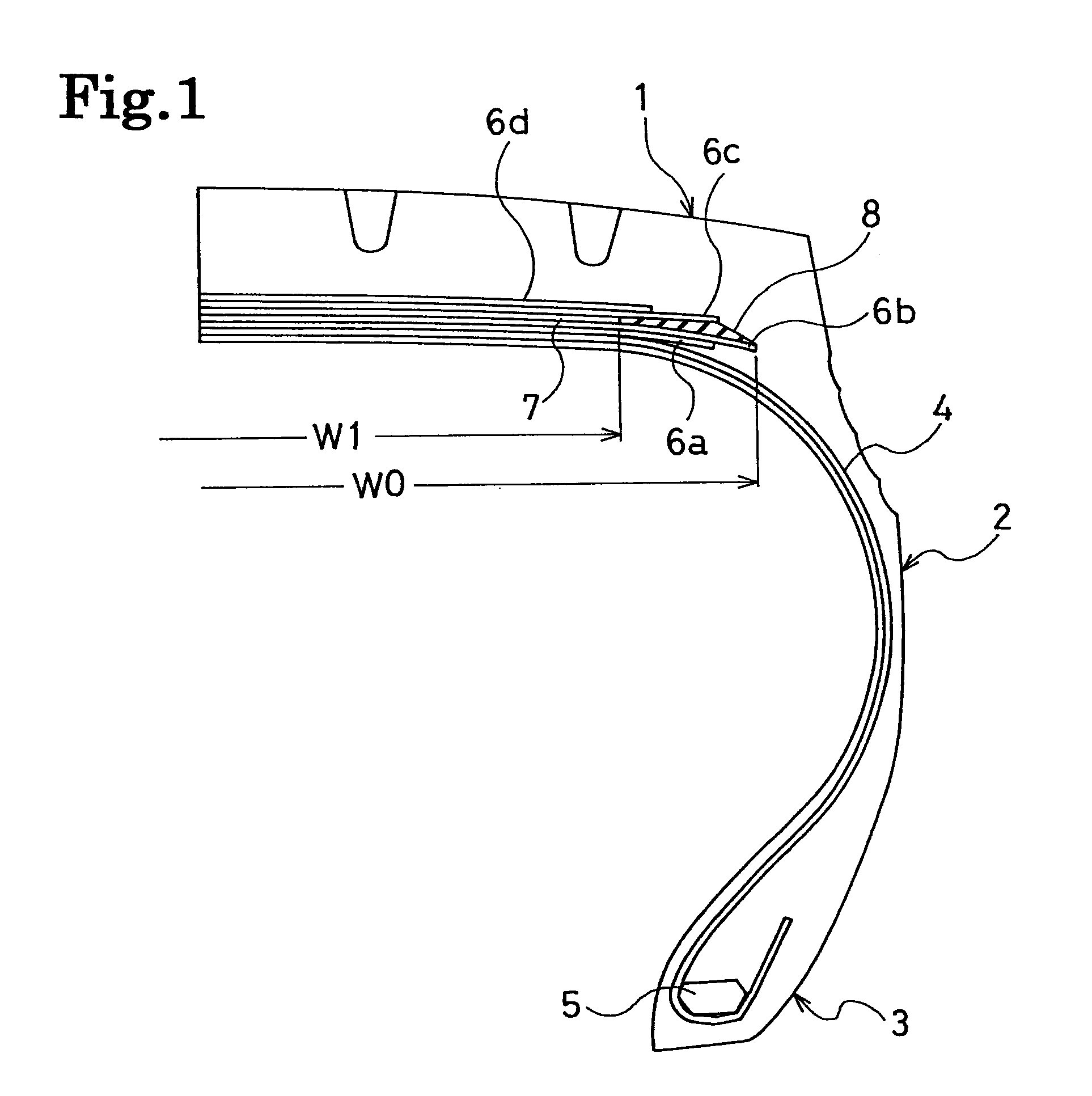Pneumatic radial tire
- Summary
- Abstract
- Description
- Claims
- Application Information
AI Technical Summary
Benefits of technology
Problems solved by technology
Method used
Image
Examples
examples
[0040]For each of Examples 1 to 4, a pneumatic radial tire was produced with the following specification. The tire size was 435 / 45R22.5. Two cross belt layers were disposed on the outer circumferential side of the carcass layer in the tread portion. One circumferential-direction reinforcement layer was disposed between these cross belt layers, and the width of the circumferential-direction reinforcement layer was smaller than the width of each of the cross belt layers. The cross belt layers were separated away from each other at the outer sides of the respective end positions, in the width direction, of the circumferential-direction reinforcement layer. The circumferential-direction reinforcement layer was configured of steel cords of two types which differ in elongation at break. The steel cords having relatively small elongation at break were disposed in the center portion of the circumferential-direction reinforcement layer, whereas the steel cords having relatively large elongat...
PUM
| Property | Measurement | Unit |
|---|---|---|
| Fraction | aaaaa | aaaaa |
| Fraction | aaaaa | aaaaa |
| Fraction | aaaaa | aaaaa |
Abstract
Description
Claims
Application Information
 Login to View More
Login to View More - R&D
- Intellectual Property
- Life Sciences
- Materials
- Tech Scout
- Unparalleled Data Quality
- Higher Quality Content
- 60% Fewer Hallucinations
Browse by: Latest US Patents, China's latest patents, Technical Efficacy Thesaurus, Application Domain, Technology Topic, Popular Technical Reports.
© 2025 PatSnap. All rights reserved.Legal|Privacy policy|Modern Slavery Act Transparency Statement|Sitemap|About US| Contact US: help@patsnap.com



